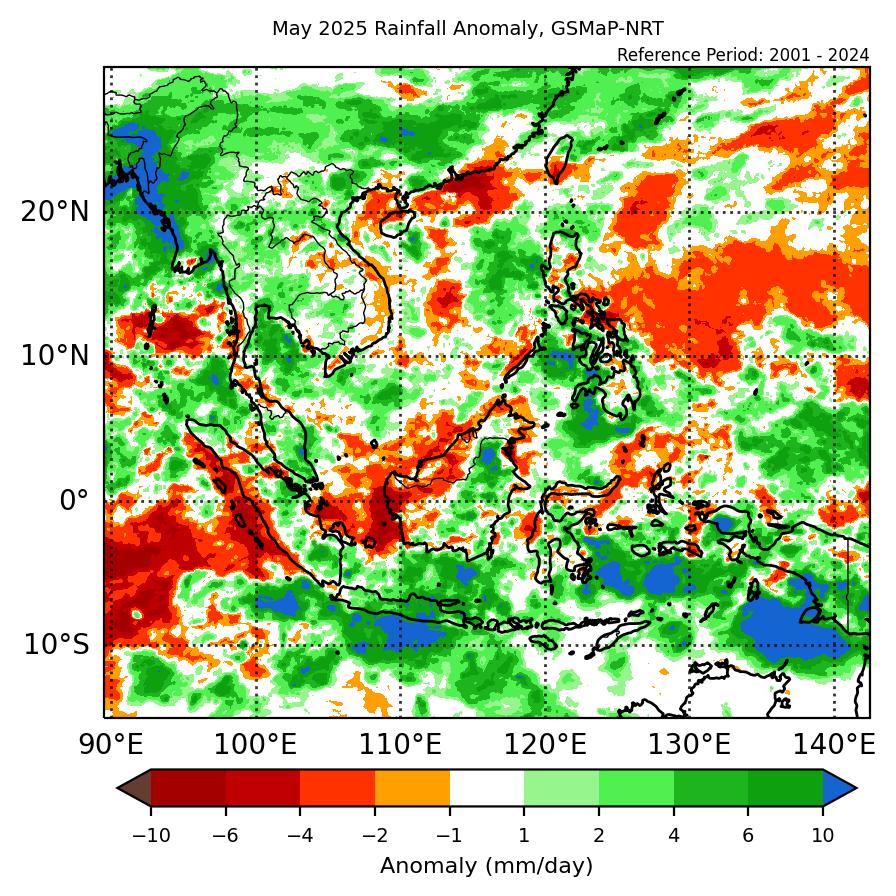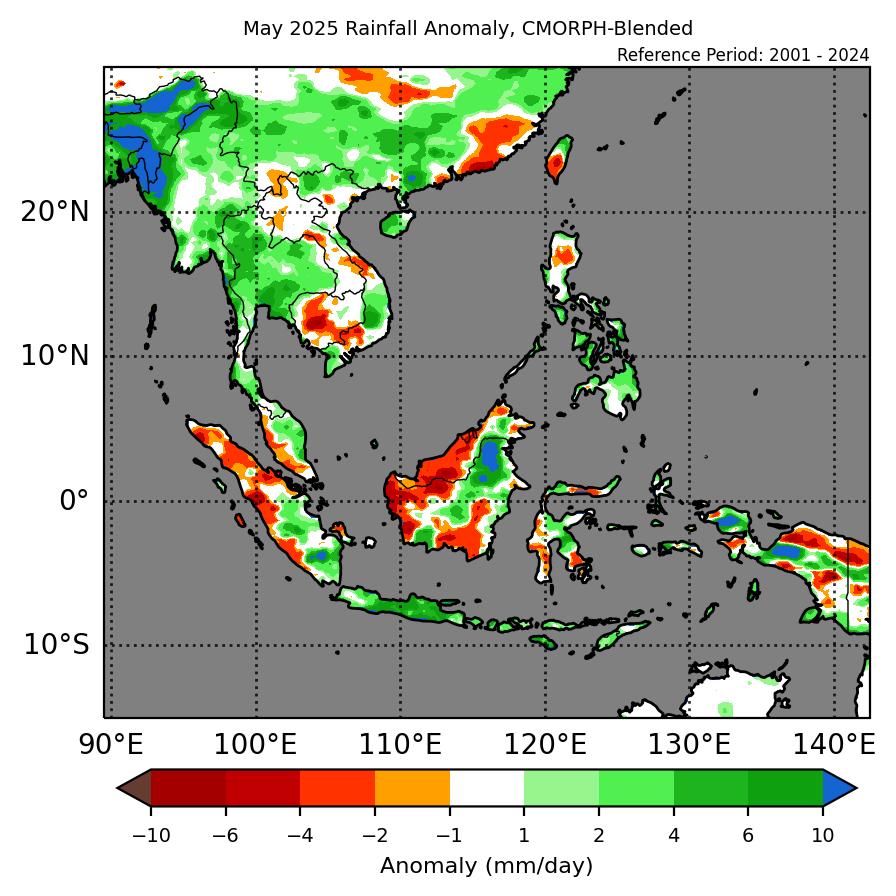Review of Regional Weather for May 2025
1. Overview
1.1 During May 2025, much of Southeast Asia experienced above-average rainfall, with parts of the Maritime Continent and southeast Mainland Southeast Asia experiencing below-average rainfall (Figure 1). The largest positive (wetter) anomalies were recorded over western Myanmar, northeastern Borneo, and parts of Papua, with both datasets recording large negative (drier) anomalies over western Borneo. However, there were notable disagreements between GSMaP-NRT and CMORPH-Blended datasets, with CMOPRH. For the northwestern Maritime Continent CMORPH-Blended recorded a mix of above- and below-average rainfall, while GSMaP-NRT recorded below-average rainfall. CMORH-Blended recorded below- to near-average rainfall for Cambodia and northern Lao PDR, while GSMaP-NRT recorded near- to above-average. CMORPH-Blended also has larger negative anomalies over parts of Papua compared to GSMaP-NRT.
1.2 The observed rainfall anomaly pattern of above-average rainfall over much of western Mainland Southeast Asia and the southern Maritime Continent and drier conditions over parts of the western and central equatorial region is mostly consistent with the predictions from the subseasonal weather outlooks for May 2025 (28 April – 11 May 2025, 12 – 25 May 2025, and 26 May – 8 June 2025). The observations are also somewhat consistent with the seasonal outlook for May, above-normal rainfall was predicted for much of the eastern Maritime Continent and near- to above-normal rainfall for parts of Mainland Southeast Asia
1.3 Below-average and near-average temperatures were recorded over much of Mainland Southeast Asia in May 2025, while near-average and above-average temperatures were recorded over most of the Maritime Continent (Figure 2). The coldest anomalies (-1°C – -2°C below average) were recorded over parts of western and central Myanmar, associated with regions of above-average rainfall. The warmest anomalies (0.5°C – 1°C above average) were recorded over southern Sumatra.
2. Climate Drivers
2.1 There was no discernible Madden-Julian Oscillation (MJO) signal for most of May based on the RMM diagram (Figure 3). At the start of the month, there were signs of an MJO signal over the Western Hemisphere (Phase 8) but it became inactive by the end of the first week. In the last week of the May, the signal briefly emerged in Phase 4 for two days before staying inactive until the end of the month. At this time of the year, Phase 8 tend to bring drier conditions to parts of the Maritime Continent while Phase 4 tends to bring wetter conditions to this region. However, with the MJO being only briefly active during May, the MJO had little effect on the overall recorded rainfall during the month.
2.2 ENSO-neutral conditions were present in May 2025.





